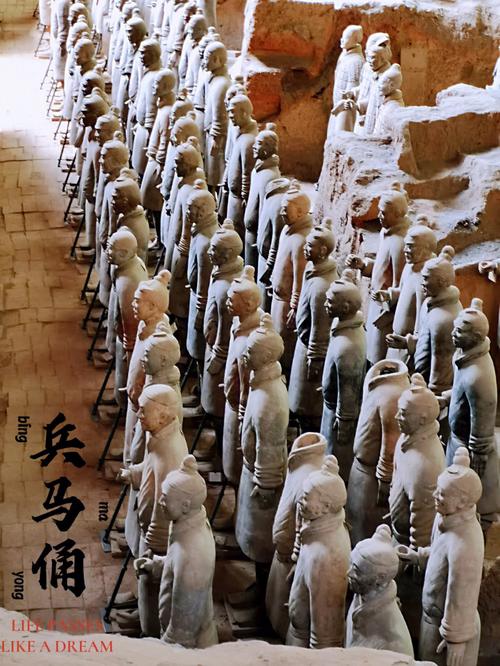
Are All the Terracotta Warriors Unique?
The Terracotta Army, a vast collection of life-size terracotta sculptures depicting the armies of Qin Shi Huang, the first emperor of China, is renowned for its sheer scale and intricate detail. One question that frequently arises is whether each of these thousands of soldiers is truly unique.
The Individuality of the Terracotta Warriors
While the army follows a standardized system in terms of rank and military divisions, each individual figure exhibits distinct facial features. This astounding level of detail suggests that the artisans were tasked with creating not just an army, but a realistic representation of a living, breathing force.
Facial Features: A Window into Uniqueness
- Variations in Facial Structure: The faces of the warriors are not uniform molds. They vary significantly in terms of bone structure, with distinct cheekbones, jawlines, and foreheads.
- Expressive Eyes and Noses: The eyes, often described as the windows to the soul, are crafted with incredible care. The shapes and sizes of the eyes differ, and even the direction of their gaze varies. Similarly, the noses exhibit unique shapes and sizes, further enhancing the individuality of each figure.
- Individualized Hairstyles and Expressions: The warriors' hairstyles are not uniform. They showcase different hairlines, lengths, and styles, reflecting the diverse fashions of the Qin dynasty. Additionally, the subtle nuances in their facial expressions, ranging from stoic determination to quiet contemplation, contribute to their individuality.
Beyond the Face: Other Markers of Distinction
The uniqueness of the Terracotta Warriors extends beyond their facial features:
- Body Types and Postures: The warriors are not all identical in physique. They vary in height and build, reflecting the different roles within the army. Moreover, their postures and the ways they hold their weapons differ, adding to the dynamism of the display.
- Armor and Clothing: The armor and clothing worn by the warriors also exhibit variations. The style and decoration of the armor, for instance, denote rank and military division.
The Craftsmanship Behind the Individuality
The creation of such a vast and detailed army was a monumental task, requiring the labor of thousands of skilled artisans.
- Molding and Assemblage: While molds were used in the creation process, they were not simply mass-produced. Evidence suggests that the molds were customized and combined in various ways to achieve the desired level of individuality.
- Hand-Carving and Detailing: After the initial molding, the figures underwent extensive hand-carving and detailing. This is evident in the intricate patterns on their armor, the folds in their clothing, and the individual strands of hair.
- Painting for Realism: Originally, the Terracotta Warriors were vibrantly painted. While much of the paint has faded over time, traces remain that reveal the use of a wide range of colors and pigments to enhance their realism.
FAQs
1. Why did Emperor Qin want each warrior to be unique?
While no definitive answer exists, it is believed that the emperor wanted his terracotta army to reflect the realism and might of his actual army. The individuality of the warriors would have served as a testament to his power and the skill of his artisans.
2. Were the Terracotta Warriors modeled after real soldiers?
It is possible that some of the figures were inspired by real soldiers, but it is unlikely that all 8,000+ warriors are exact portraits. The artisans likely drew inspiration from a variety of sources to create a diverse and realistic-looking army.
3. How do we know that the Terracotta Warriors were originally painted?
Traces of pigment remain on the figures, and archaeological evidence suggests the presence of workshops dedicated to painting the sculptures.